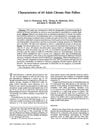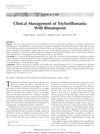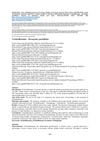TLDR Trichotillomania is different from OCD and is best treated with habit reversal therapy and specific medications.
Trichotillomania, a disorder involving repetitive hair pulling leading to hair loss, was noted to have a point prevalence of 0.5% to 2.0% in community studies. Although it was classified with OCD in the DSM-5, the article highlighted that trichotillomania and OCD might differ significantly, particularly in treatment approaches. Effective treatments for trichotillomania included habit reversal therapy and medications like n-acetyl cysteine or olanzapine, which differed from those for OCD, as some OCD treatments were ineffective for trichotillomania. The article provided recommendations for managing trichotillomania based on clinical experience and research findings.
119 citations
,
February 2009 in “Neuroscience & Biobehavioral Reviews” Trichotillomania involves hair pulling and can be treated with therapy and medication.
 417 citations
,
March 1991 in “American Journal of Psychiatry”
417 citations
,
March 1991 in “American Journal of Psychiatry” Most adult chronic hair pullers are women who started in their early teens, often have other mental health issues, and may pull hair due to underlying psychiatric conditions.
 5 citations
,
November 2011 in “Expert Review of Dermatology”
5 citations
,
November 2011 in “Expert Review of Dermatology” The document concludes that early diagnosis and a comprehensive treatment plan are crucial for managing hair loss in children, with a focus on both medical and psychological support.
 7 citations
,
May 2013 in “Optometry and vision science”
7 citations
,
May 2013 in “Optometry and vision science” Bimatoprost can help regrow eyelashes in people with trichotillomania.
January 2023 in “Odisha Journal of Psychiatry” Thorough patient interviews are crucial to identify self-inflicted hair loss.
2 citations
,
March 2022 in “Indian Journal of Psychiatry/Indian journal of psychiatry” The conclusion is that careful management of both psychiatric and skin conditions is crucial for HIV patients, using medication and interdisciplinary approaches.
 2 citations
,
January 2023 in “Journal of Education, Health and Sport”
2 citations
,
January 2023 in “Journal of Education, Health and Sport” Cognitive-behavioral therapy with habit reversal training is the most effective treatment for trichotillomania.



